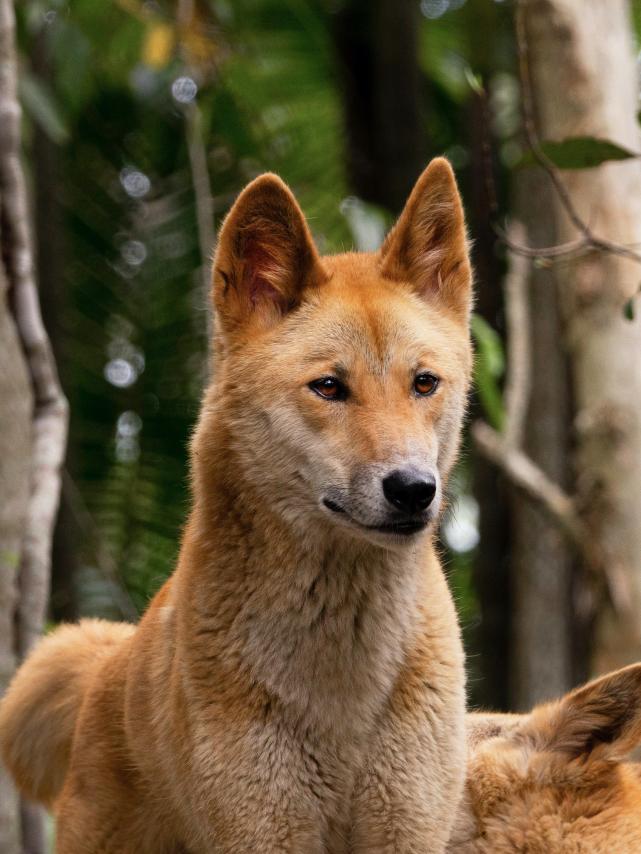New research has thrown the management of wild dogs and conservation of dingos into disrepute across the country with concerns arising from all sides of the issue.
A pair of recent studies in 2019 and 2021 from the University of New South Wales in Sydney found that most wild canine species across the country are either pure dingoes or dingo-dominant hybrids (more than 50 per cent dingo genes).
This has prompted state governments, including Victoria, to review their management programs due to a conflict between the current policy and regulatory framework for wild dog management and dingo conservation and the evidence from the new research.
On 1 October, the Victorian Government extended the Order in Council to unprotect dingoes in the three kilometre Livestock Protection Buffer (LPG) for a further 12 months while the review is ongoing.
“The 12-month extension to the order allows for a comprehensive assessment of the dingo population across Victoria to inform the appropriate protections moving forward,” a Victorian Government spokesperson said.
“We will continue to work with Traditional Owners, farmers and private landholders to appropriately balance the protection of livestock and dingo conservation.”
Most of north-eastern Victoria, including outer parts of the Yarra Ranges, are included in the Order in Council, which allows dingoes to be treated as any other wild dog on all private land in Victoria and on public land within three kilometres of any private land boundary within the zone. Other than in some areas south of Mildura and near the border with South Australia, only north-eastern Victoria is factored in the Order in Council, meaning dingoes are still protected as a threatened species in large swathes of the state.
National Wild Dog Management Coordinator at the Centre for Invasive Species Solutions Greg Mifsud said any change to the wild dog management program is going to have severe implications on livestock producers and neighbours to public lands across most of Victoria.
“From my perspective, from a wild dog and dingo management perspective of limiting their impacts on neighbouring properties, the livestock protection buffer was implemented back in 2013 which allows us to undertake control of the dingo as an unprotected wild dog in that zone,” he said.
“My concern is that six months to obtain long-term ecological data is probably an insufficient timeframe,”
“It’s extremely important because if this review finds that dingoes need to be protected across the entire state, it means that basically no one can undertake control of wild dogs and dingoes.
“Someone like (Don Valley resident) Mr Greenwood would be liable and be committing an offence by shooting those dogs that are attacking his sheep.”
The dingo’s protection, cultural significance to First Nations people as well as the wider Australian population and its ecological importance as a native top-order predator make any decision on management and its threatened status crucial, especially given the impact that wild canine species, both dogs and dingoes, can have on livestock. Nevertheless, dingoes also play an important role in managing the populations of wild cats, wild goats, foxes and kangaroos which can also be destructive.
Mr Mifsud said he would like the review to acknowledge that dingoes are protected, conserved and uncontrolled over a very large land mass within the public lands in north, western and eastern Victoria.
“If the Order in Council is removed, then you basically won’t have any control occurring proactively in that three-kilometre buffer, which means particularly in those peri-urban areas, the impacts will go through the roof,” he said.
“Dogs will just continue to spill out of those areas into what are, in terms of prey availability, extremely productive landscapes.
“Certainly there’s a whole range of exclusion fencing to prevent feral animals from moving through but the problem is you need a full perimeter or a complete line of fencing to avoid the impact.”
Animal protection organisation Animals Australia recently launched a challenge to the Order in Council in the Supreme Court.
Animals Australia Legal Counsel Shatha Hamade said to use ‘livestock predation’ as an excuse to justify the killing of dingoes is illogical given the industry’s own research shows that the vast majority of livestock deaths relate to farm management practices.
“Dingoes have been used as a convenient scapegoat by the government and agriculture industry for far too long. Through brutal trapping and poisoning methods, these animals have suffered immeasurably and now their very survival as a species is in question,” she said.
“What the Victorian Government is sanctioning in the ongoing killing of native dingoes is irreversible harm. Dingoes are apex predators who play a critical role in keeping ecosystems in balance. Once they are gone, they are not coming back.”
In a 2015 study, ‘Neonatal lamb mortality: factors associated with the death of Australian lambs’ (Refshauge G., Brien F. D., Hinch G. N., van de Ven R, Animal Production Science 56, 726-735) predation accounted for only seven per cent of 3198 newborn lamb deaths, which accounted for deaths due to any predator animal, including foxes.
Predation was the sixth-most common cause of death after a postmortem autopsy, topped by starvation–mismothering (25 per cent), stillbirth (21 per cent), birth injury (18 per cent), death in utero–prematurity (10 per cent ) and dystocia (nine per cent).
Campaign Director of wildlife defence initiative Defend the Wild Alix Livingstone said they would like to see dingoes recognised for both their ecological and cultural significance across Victoria and wild-dog terminology removed from policies in accordance with the latest science available.
“Currently, there is very little data available on the population demographics of the dingoes that exist in eastern Victoria, which is concerning in of itself when you consider the level of lethal control they are currently being subjected to,” she said.
“We would also like to see the Victorian government support landholders to adopt non-lethal alternatives and provide practical on-ground support to successfully implement them. Currently, governments primarily offer support to landholders adopting lethal control, without offering support to those who are adopting alternative methods to protect their animals.”
Through the Victorian Fox and Wild Dog Bounty, a ‘single piece of skin and fur running from the snout, incorporating the ears, along the animal’s back and including the tail’ from a ‘wild dog’ can be collected for a $120 reward.
Following the 2019-2020 bushfires, the Victorian Government contributed 50 per cent of the cost of replacing fire-damaged fences for landholders of property bordering National Parks, State Parks or State Forests with an option to upgrade the fences to ‘exclude pests such as wild dogs’ where the government would pay half the cost up to $5 per metre.
The Star Mail’s research found this to be the only support from the Victorian Government that has been offered for non-lethal control specific to wild canines.
Ms Livingstone said research in Australia and around the world has now proven that non-lethal methods of management can successfully protect livestock from apex predators.
“In fact, the use of livestock guardian animals has been found to be more successful than lethal control if adopted correctly. A program in the Hunter Valley known as the Last Stop Donkey program is saving donkeys that would otherwise be killed in areas where they are considered pests, and retraining them to protect livestock from dingo predation,” she said.
“Sheep and goats are at a higher predation risk than cattle, and landholders understandably want to protect their animals,”
“The use of non-lethal alternatives can have limitations if adopted incorrectly by landholders, which is why it should be led and supported by the Victorian Government to ensure its success, through providing on-ground support to landholders to transition.”







